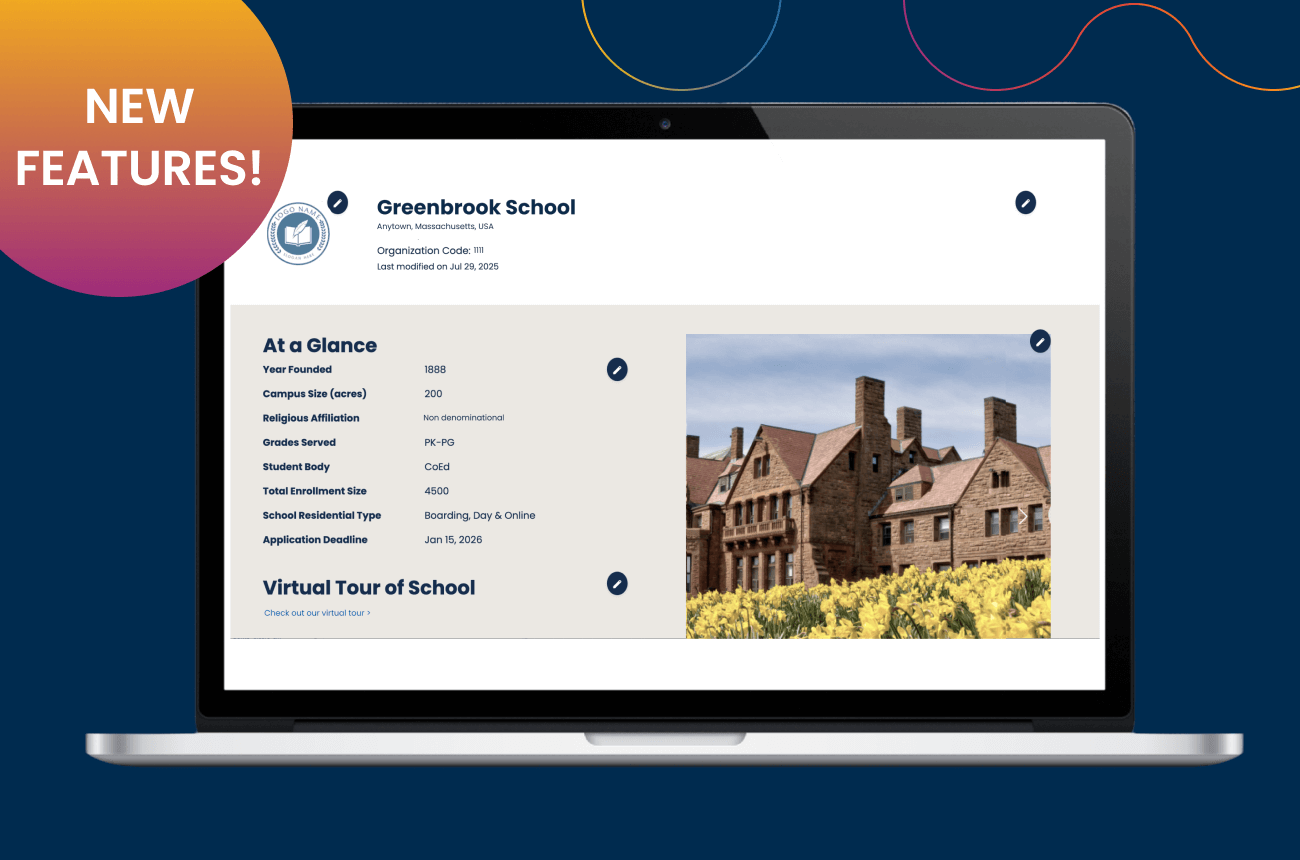What to Keep in Mind for End-of-Year Reporting

Spring sports, AP exams, flowering trees, and the final board of trustees meeting: the close of the school year is rapidly approaching.
- What do you report? What do you share? There are many factors, including the leadership and goals of your head, the culture of your board, and the health of your enrollment. There is no simple formula but there are several things to consider:
Let’s start with Stephen Covey’s famous quote from The Seven Habits of Highly Effective People: “Begin with the end in mind.” When training tour guides, we talk about the goal for the tour before it even starts: What do we want the family to walk away with? What are the key messages we want a family to receive? Then we plan the tour accordingly. You should be thinking similarly about your board report. This might even be a good question for you to ask your head: “When I walk out of the board meeting, what do want me to have accomplished, what message should I have delivered?”
For me, my “end in mind” for any board meeting can be summed up in one word: confidence. When I leave the room, I want my board to feel confident that the enrollment of our school is safe in my hands. And then when I might need something from them or have a crazy idea for consideration or even—gasp—stumble, they will embrace it all because I have given them confidence in me, my staff, my direction, and my strategy. What and how I present is all decided based on leaving them confident in the school’s admission operation. And by doing so, I take one more possible headache off the desk of my head and hopefully make him look good and feel proud. After all, I work for him, but he works for them.
Second, it’s important to remember the role of the board. It serves a strategic, long-term function, not a day-to-day management function. As noted in NAIS’s Trustee Handbook, trustees, “…plan for the future of the school for which you care.” Our role, as Leo Marshall of the Webb Schools wrote on this ALC blog, is to provide, “information that will help them make important strategic decisions.” If all we are doing this month is giving a historical report of the past with a pile of statistics, then we are failing to fulfill our responsibility. As Tommy Adams, Assistant Head of School for Enrollment at Mercersburg Academy, says, “In order to be sustainable over the long haul, we must be strategic.” What you should do with your historical data is use it to inform trends and thinking that you should be engaging with your board. Use what has happened in the past to help you understand what might happen in the future. You best serve your board and your head if you can address where your admission is headed and where it should be headed. (Admittedly, not always the same thing!)
Finally, in considering your board report and presentation, consider your audience. A good resource for this (and for all our work in admission, actually) is Michael Thompson’s Understanding Independent School Parents. While many on your board may not be current parents, in my experience many of them will nonetheless have the same profile: highly successful, well-educated, wealthy, and others often defer or report to them. Thompson offers some great insights and some great suggestions. It’s a good read. This isn’t addressing the faculty or an open house group. This isn’t speaking with your staff or meeting with your administrative colleagues. Know and understand your audience and plan your presentation and messaging accordingly.
Your final board report of the year is your opportunity to tell the admissions narrative of the year just finishing and to show your expertise and competence in helping the board think strategically about your school’s enrollment, appreciate your and your department’s accomplishments, and understand the importance of your work. Engage them professionally and thoughtfully and you will be valued and taken seriously.
Resources
Admission and Financial Aid Trends - What Every School Leader Should Know: a presentation by Aimee Gruber (SSATB) and Amy Hammond (SSS by NAIS)
Working with Heads and Boards: part of the ALC Power Practices Compilation




